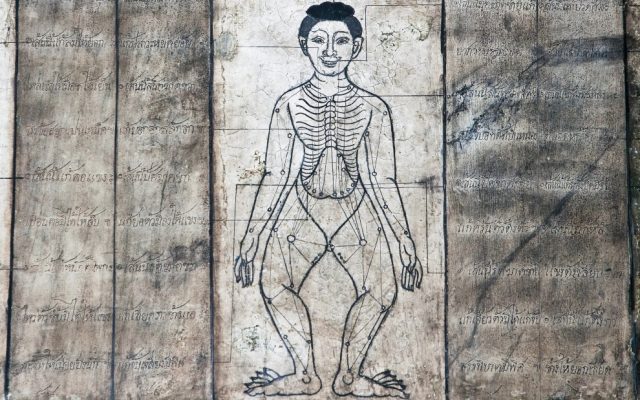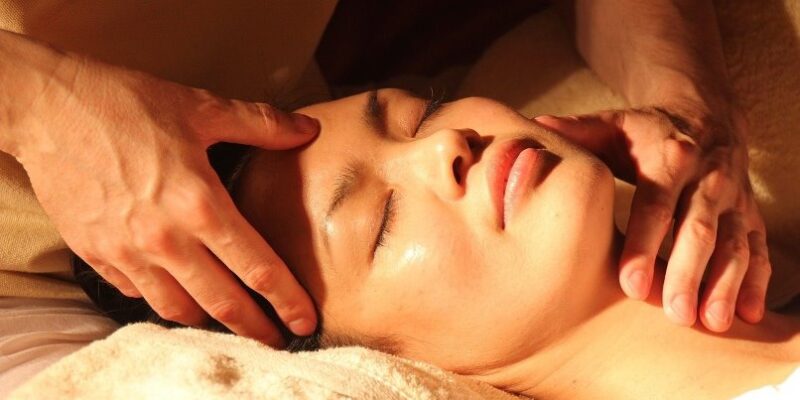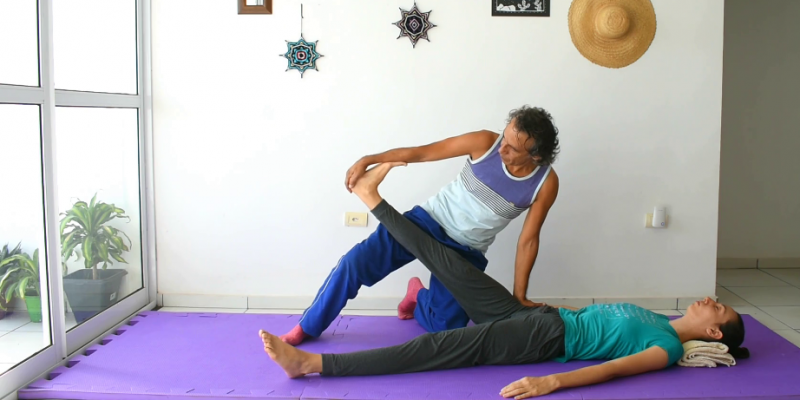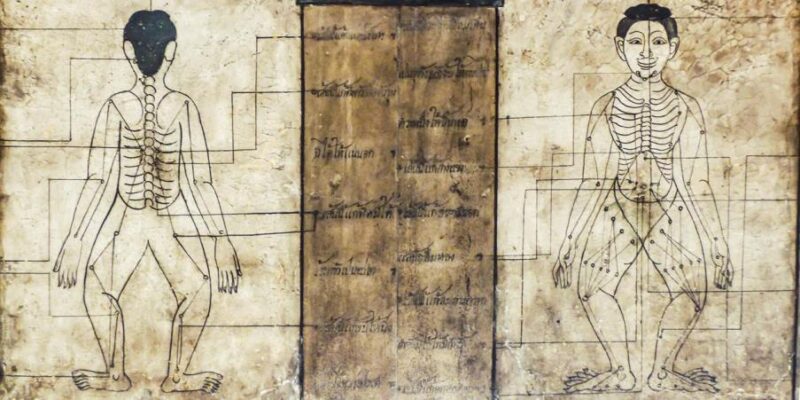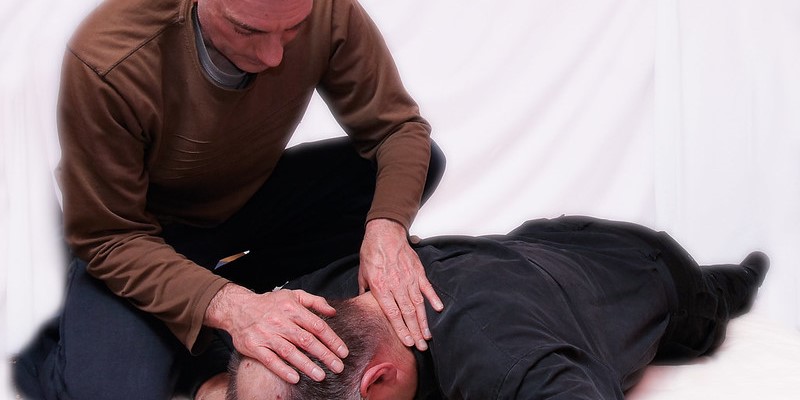
In Thailand, the idea of using acupressure protocols is to manipulate a standardized set of acupressure points along the Sib Sen Energy Lines to alleviate or cure certain well-known ailments or discomforts, which are often of an orthopedic nature (musculoskeletal issues).

We could think of these treatment protocols as “point formulas” or “point recipes.” Each formula includes the specific Sen Lines and acupoints to use when treating a common health issue such as, for instance, headaches, facial disorders, shoulder pains, elbow, wrist, back pains, hip pains, knee pain, ankle and toe sprains, to name some health conditions.
Moreover, the acupressure formulas don’t only contain the points to be manipulated for a certain health issue, but also how long a point should be pressed, with how much force, and with how many repetitions. In general, acupressure protocols are integrated in a complete full body Thai Massage session, but they can also be used as is. Acupressure protocol treatments are usually applied daily until improvement of the health issue shows.
Notably the Southern Style of Thai Massage — commonly called Royal Style Thai Massage or Therapeutic Thai Massage — which is typically associated with the Wat Pho Temple style, applies acupressure protocols to treat common ailments instead of using more “intuitive” Sen Line work. Most of these protocols are based on the ancient medical texts as mentioned in our post Origins and History of the Sen.
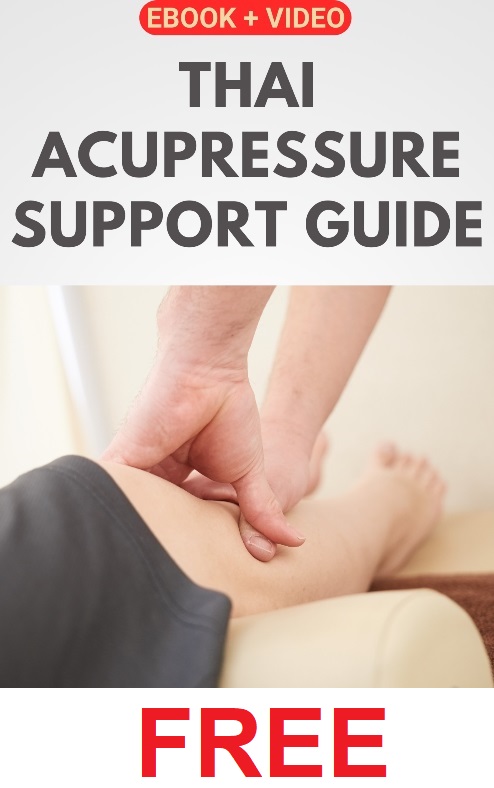
For instance, the Wat Pho Medical Massage School in Bangkok offers an Advanced Medical Thai Massage course of sixty hours that teaches the fundamentals of Thai Massage Points and Sen Lines for relief of more than fifty minor ailments. These ailments include conditions like muscle sprains and pains, headaches, tennis elbow, neck stiffness, lower back pains, muscle cramps, fatigue, and muscle stiffness, muscular discomfort, and nervous tensions, and such more.
Of course, there are advantages to using Thai acupressure protocols: we need less analysis, diagnosis or planning to treat, for instance, a certain type of headache, because the way to treat it, the what and how, is already supplied in (proven) standard treatment recipes.









